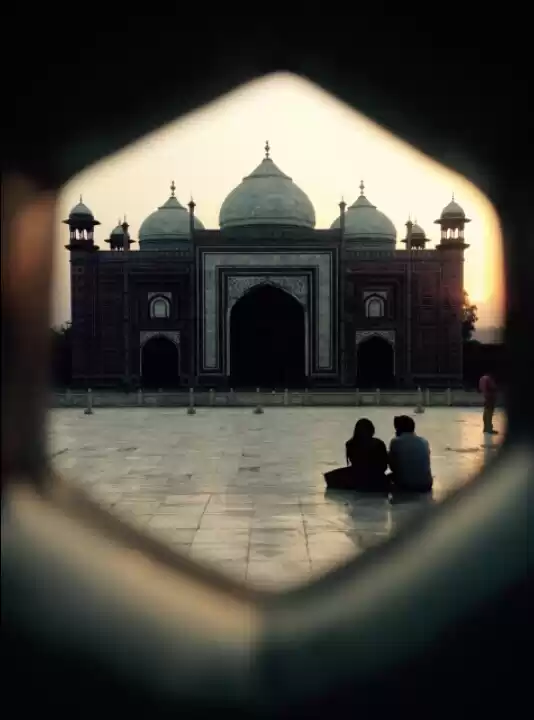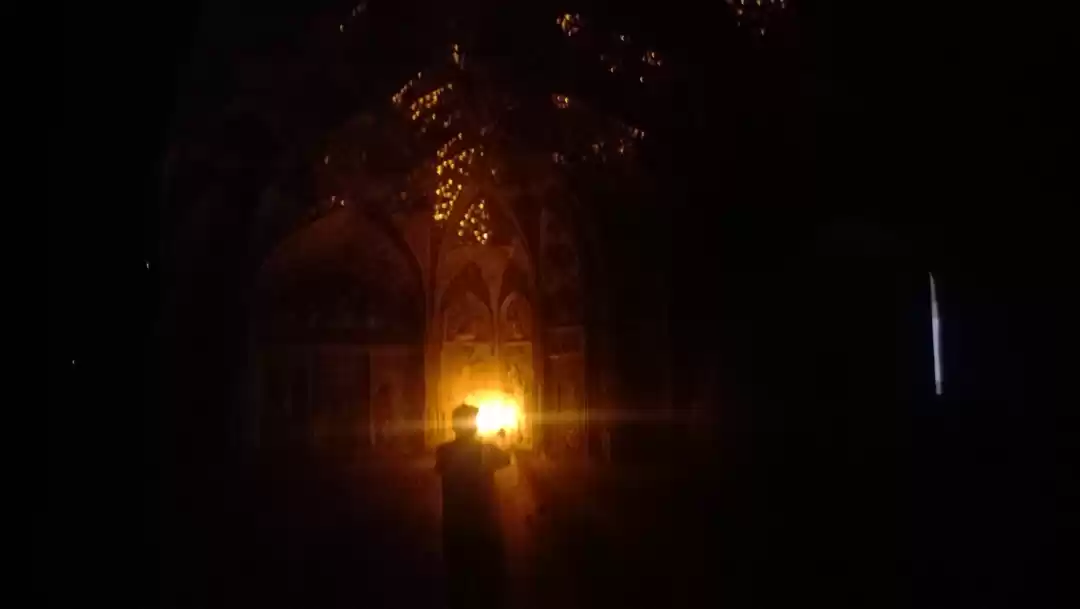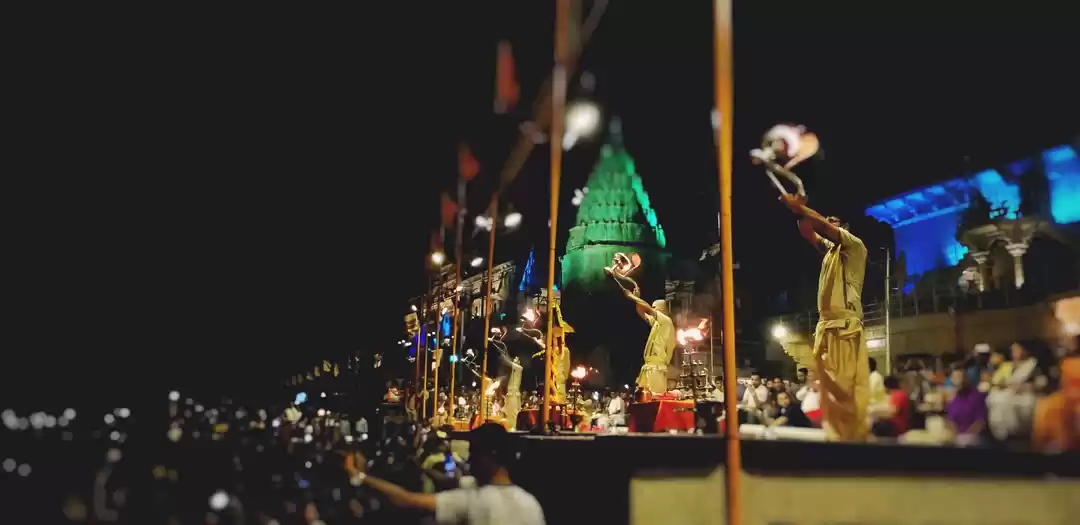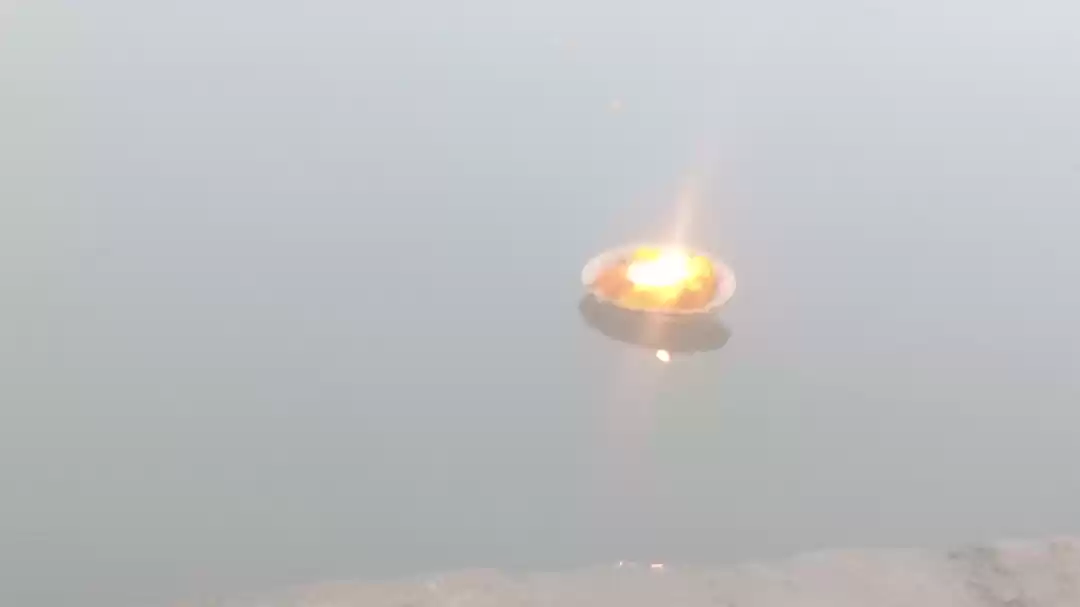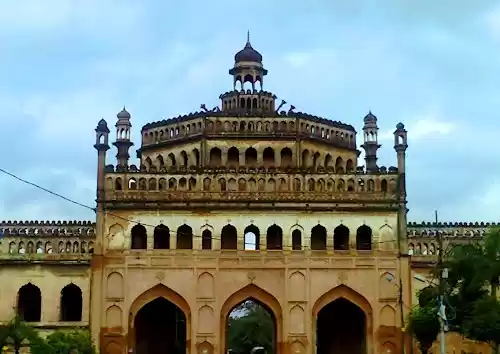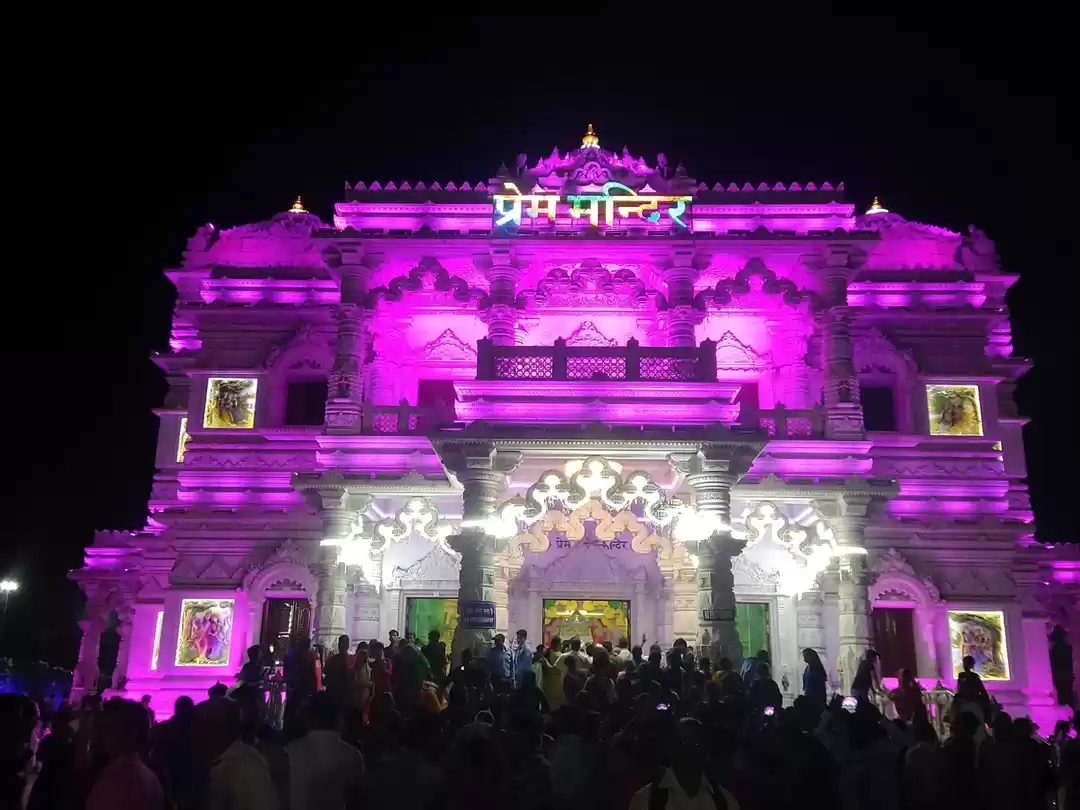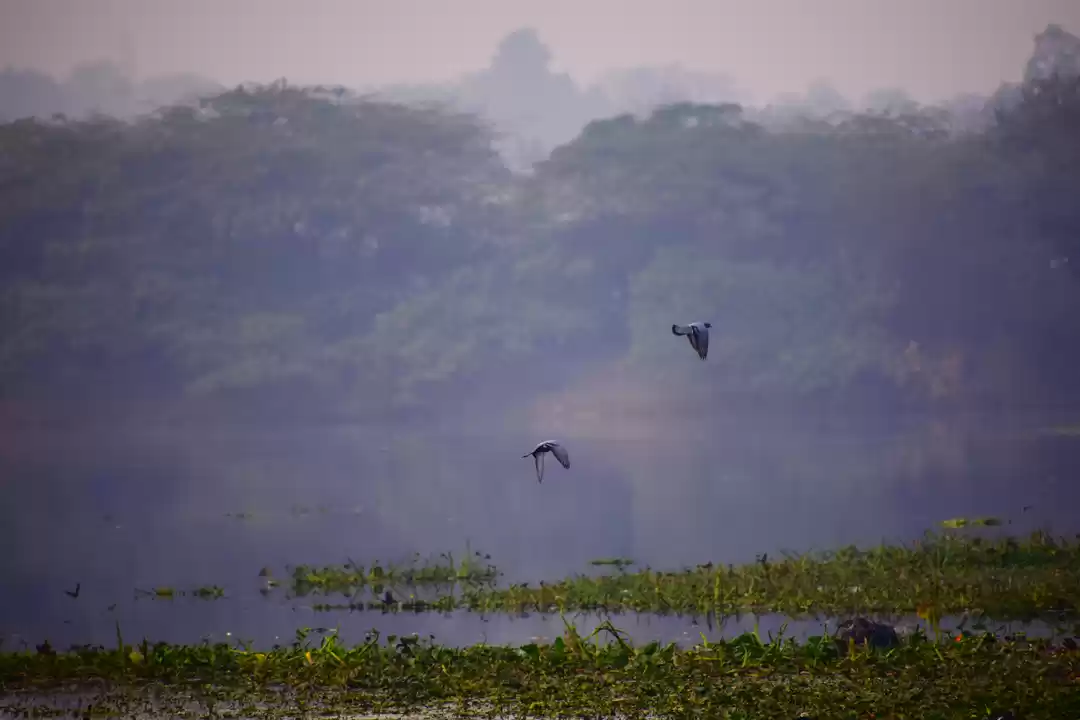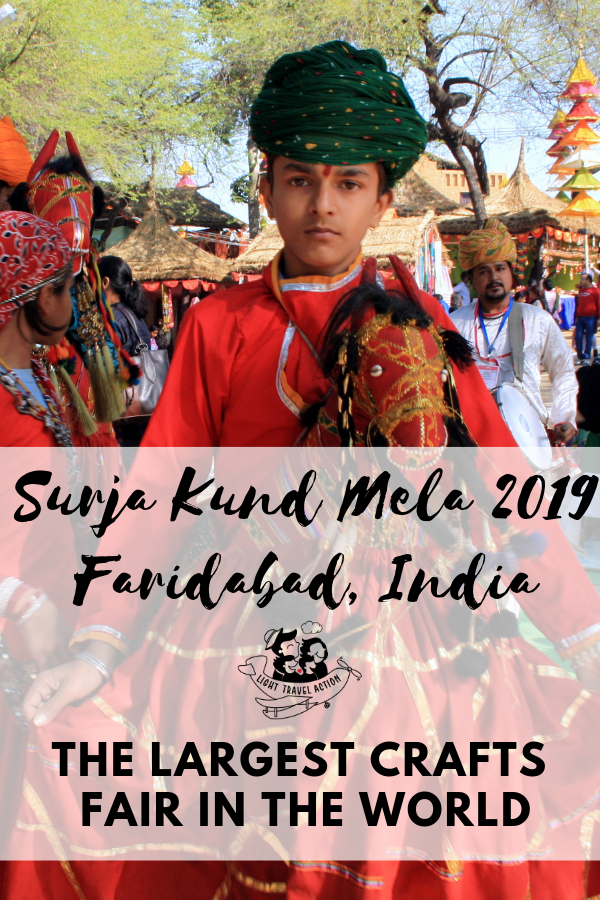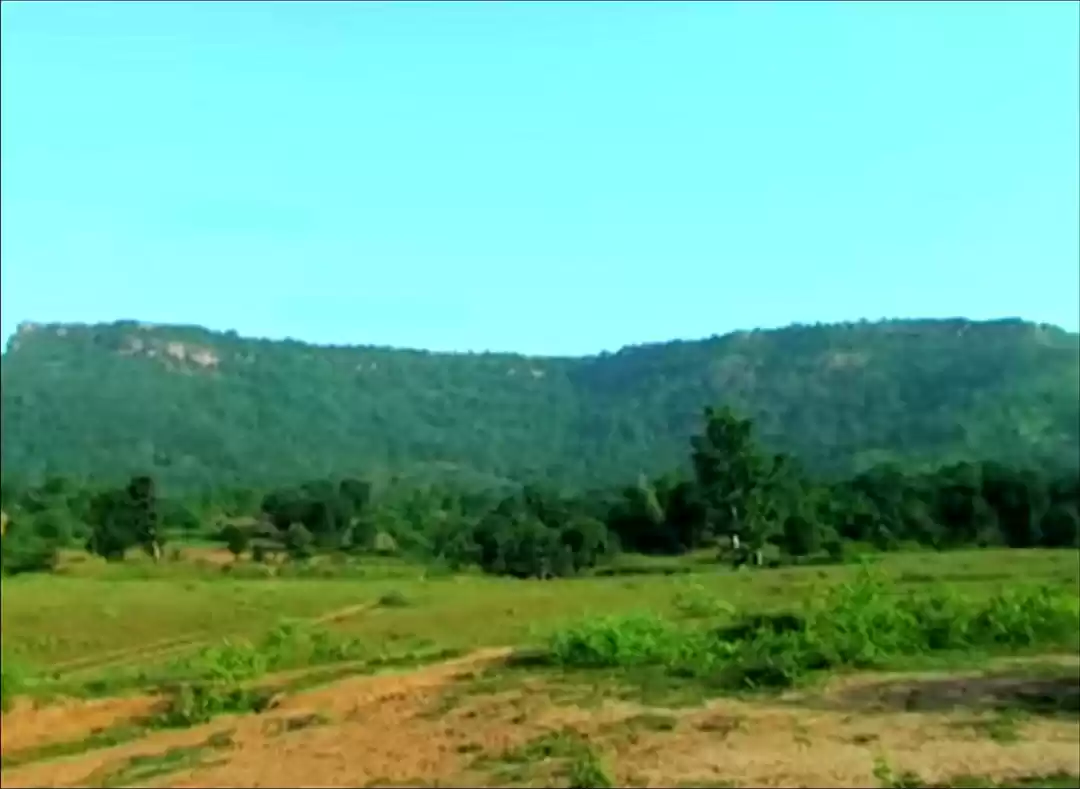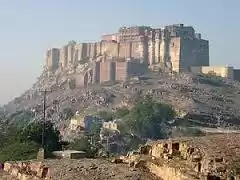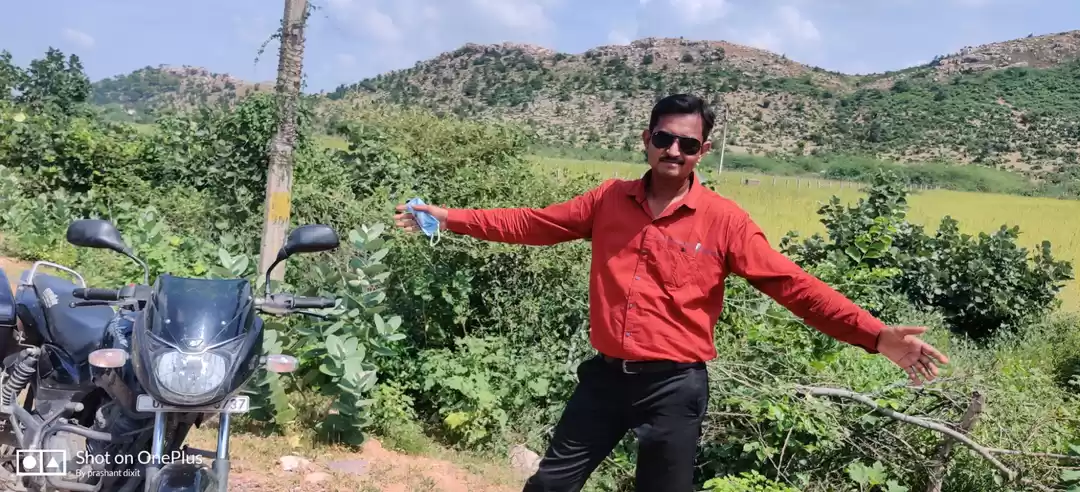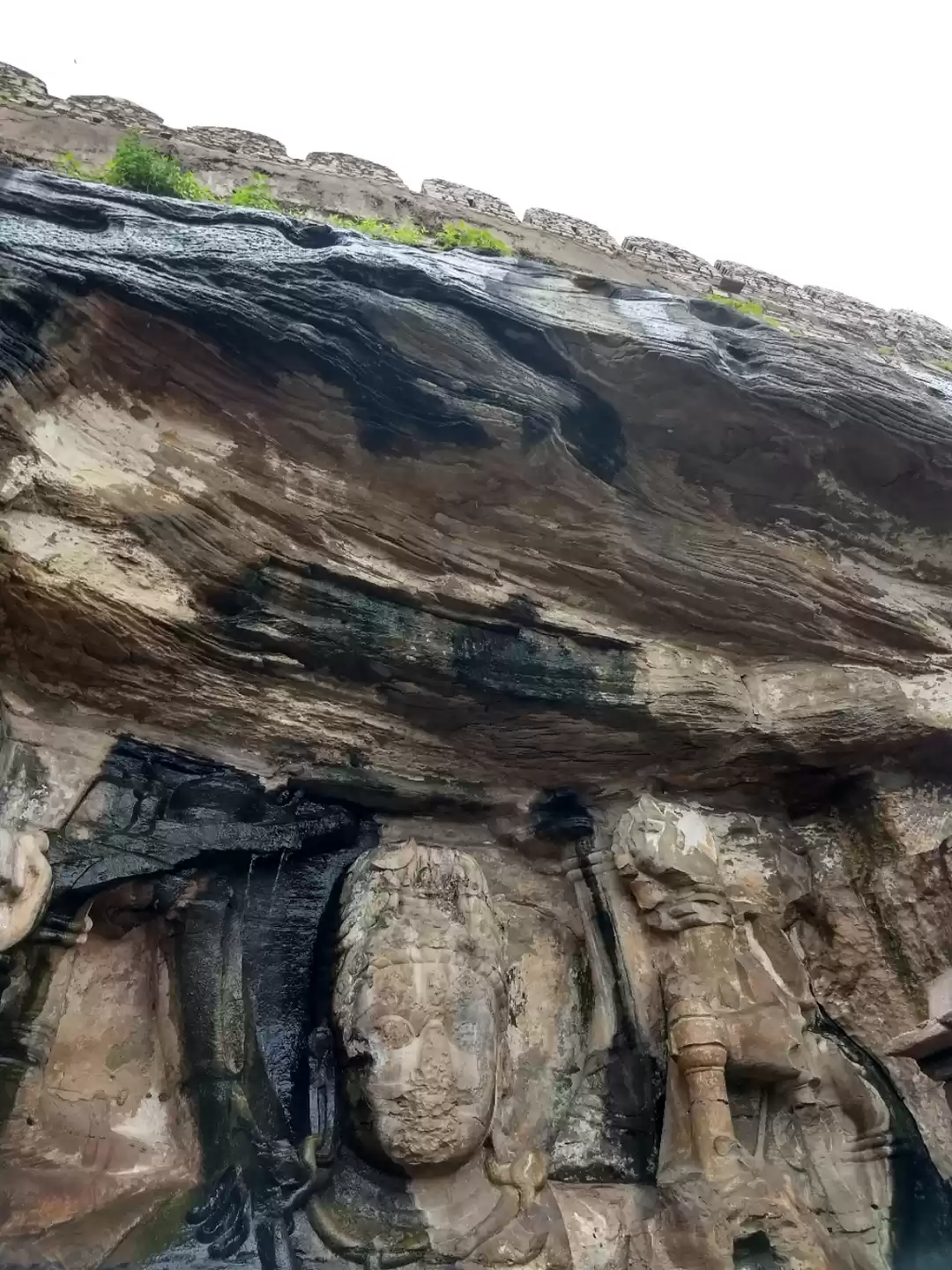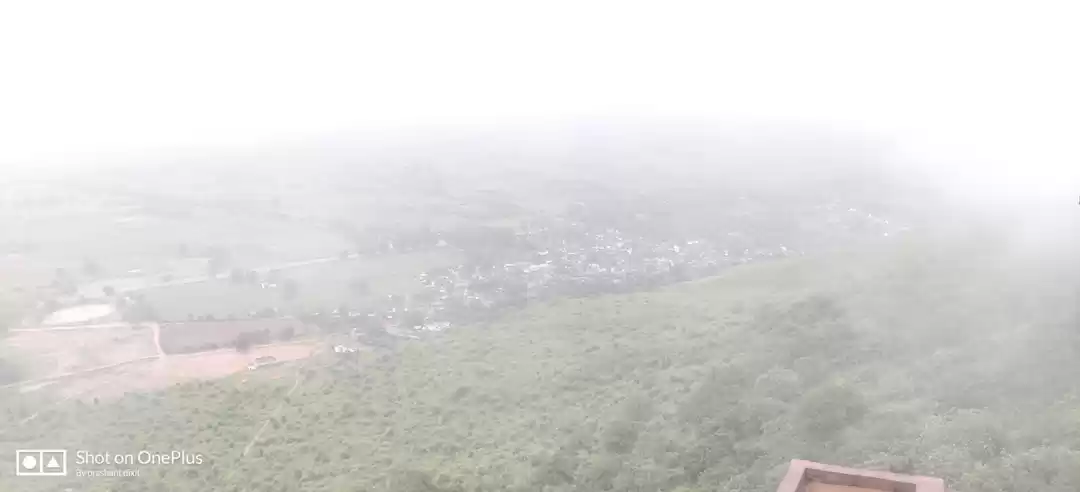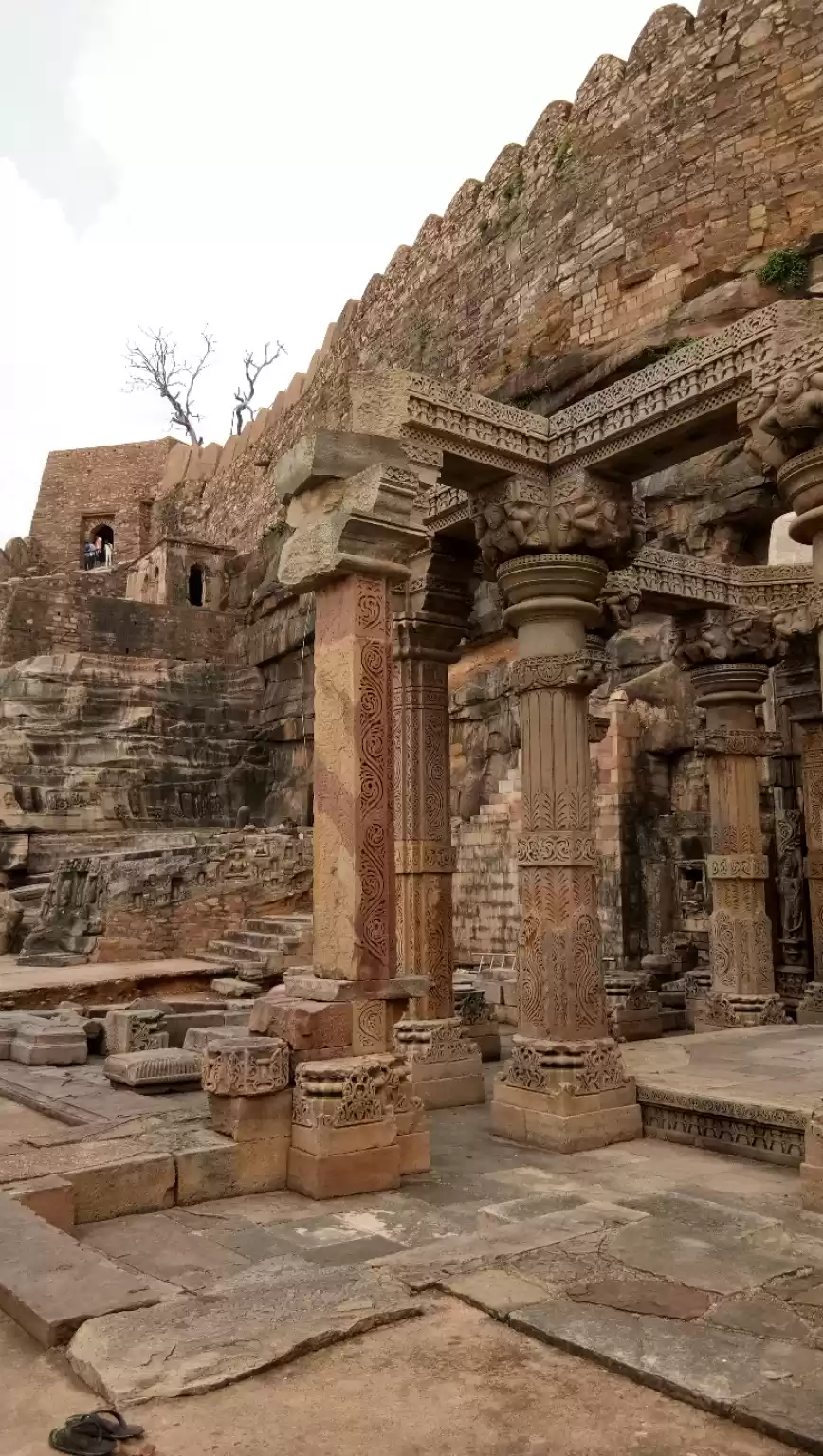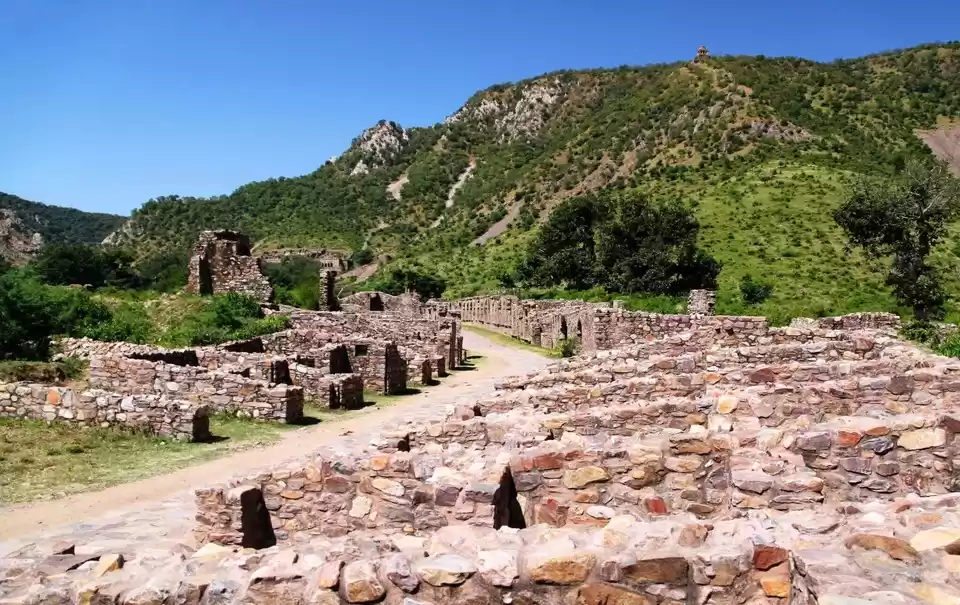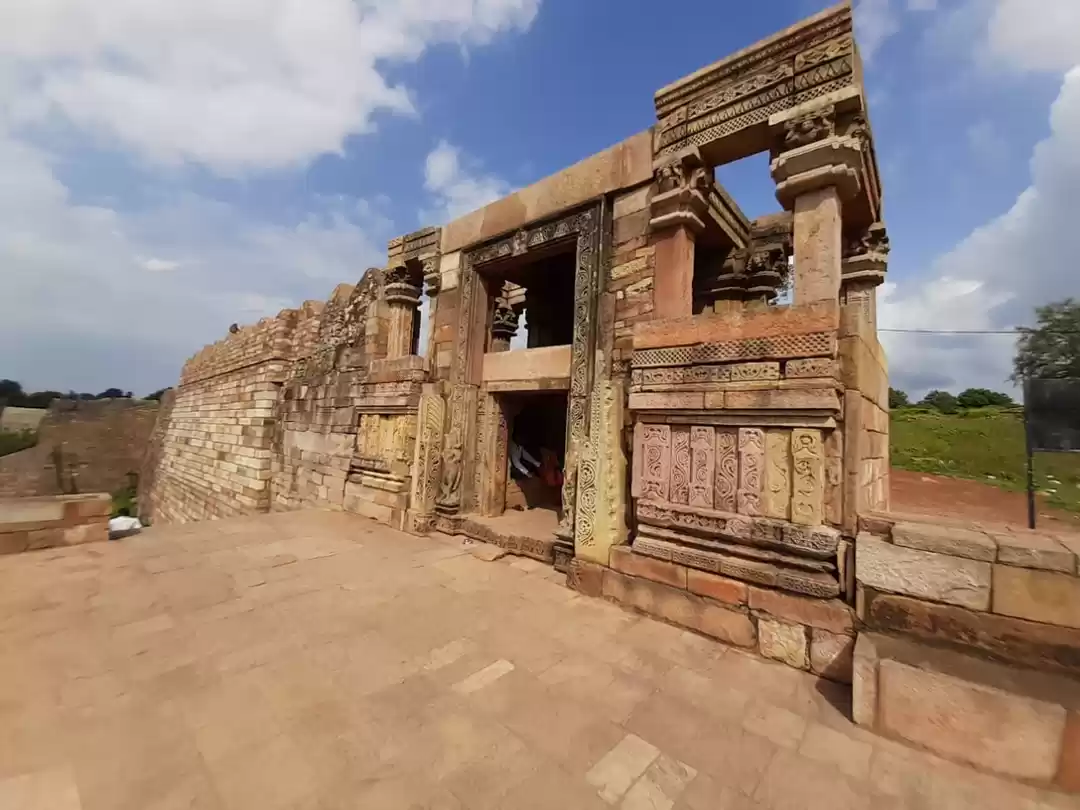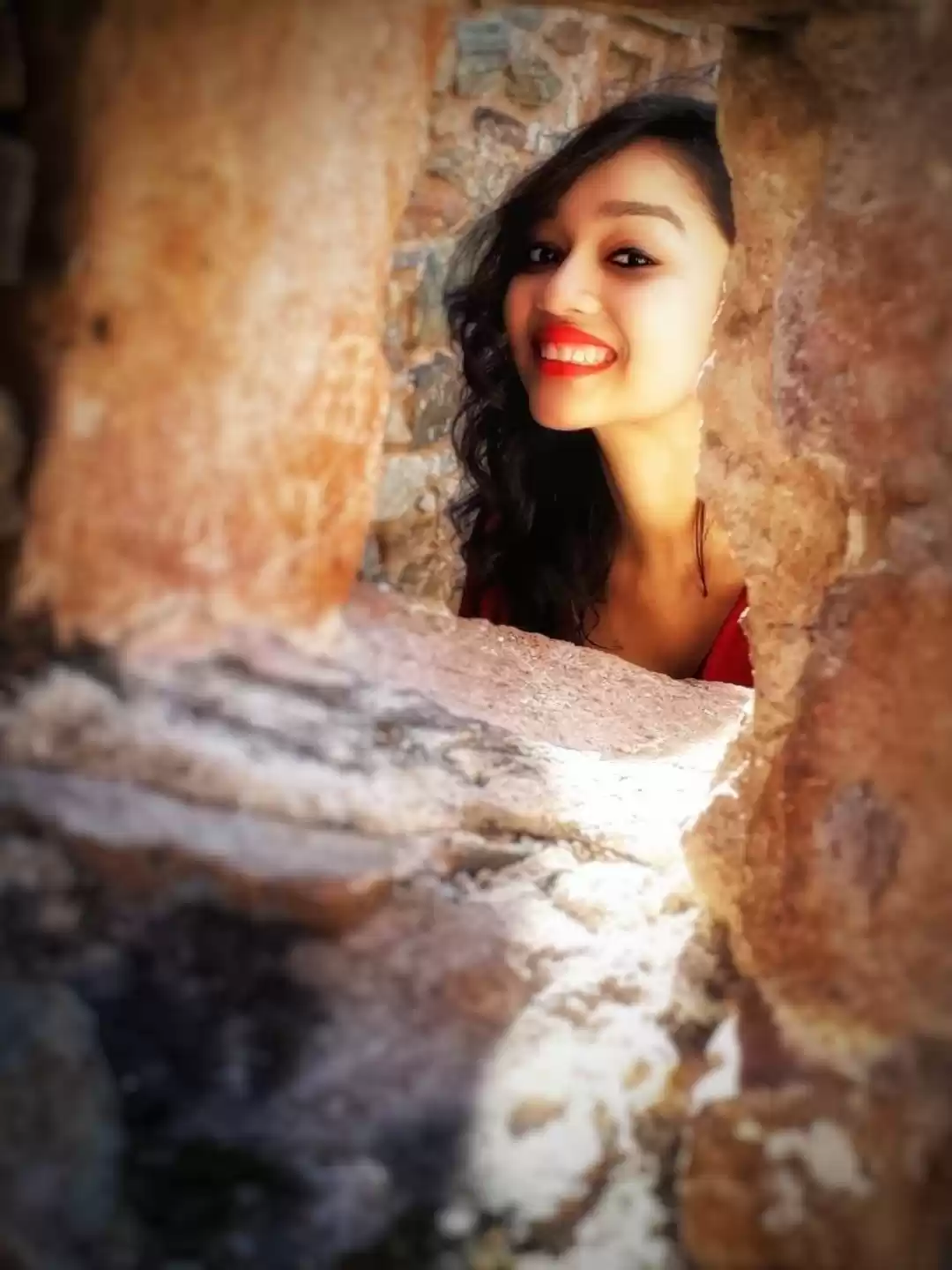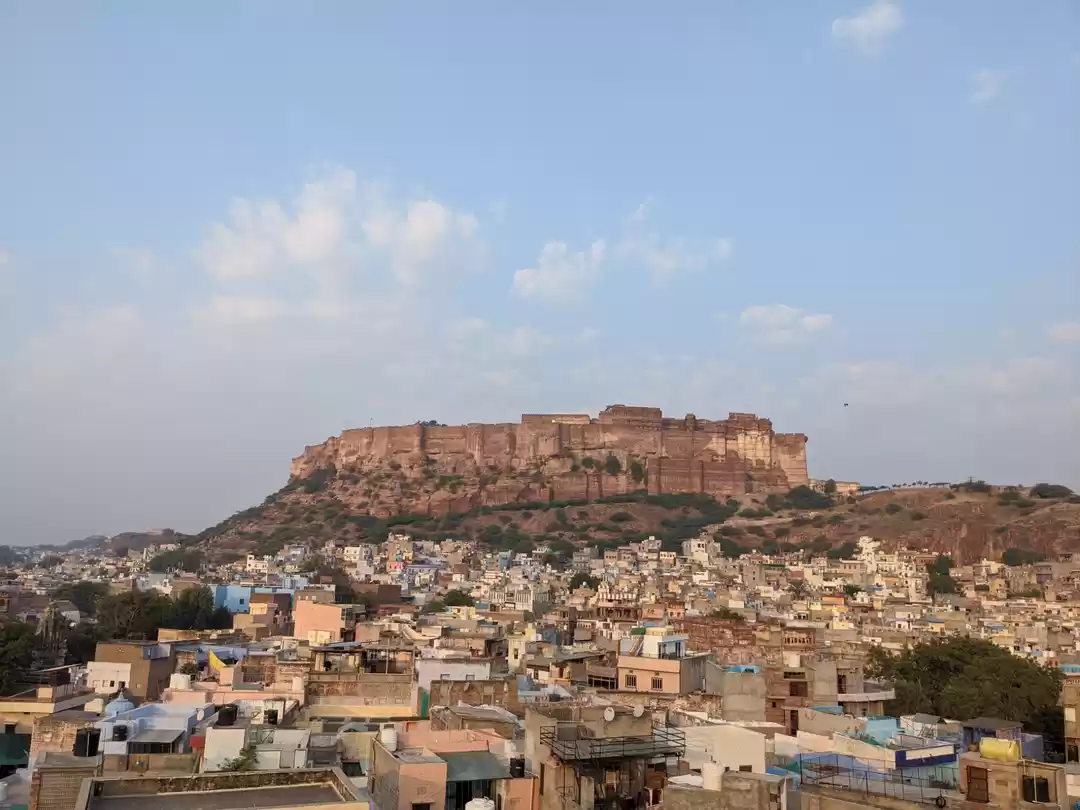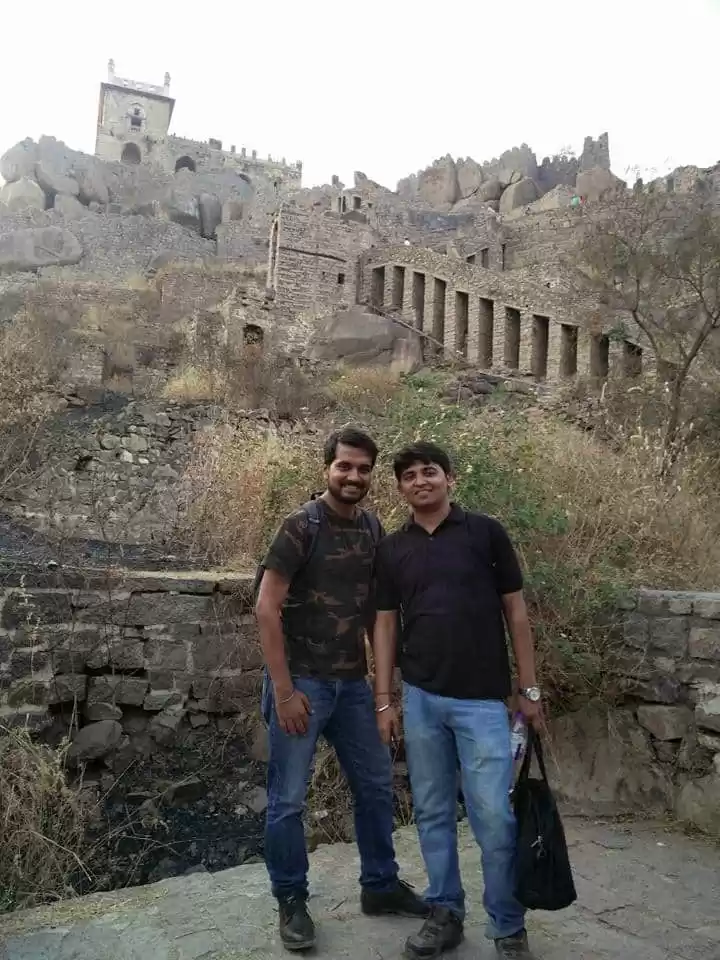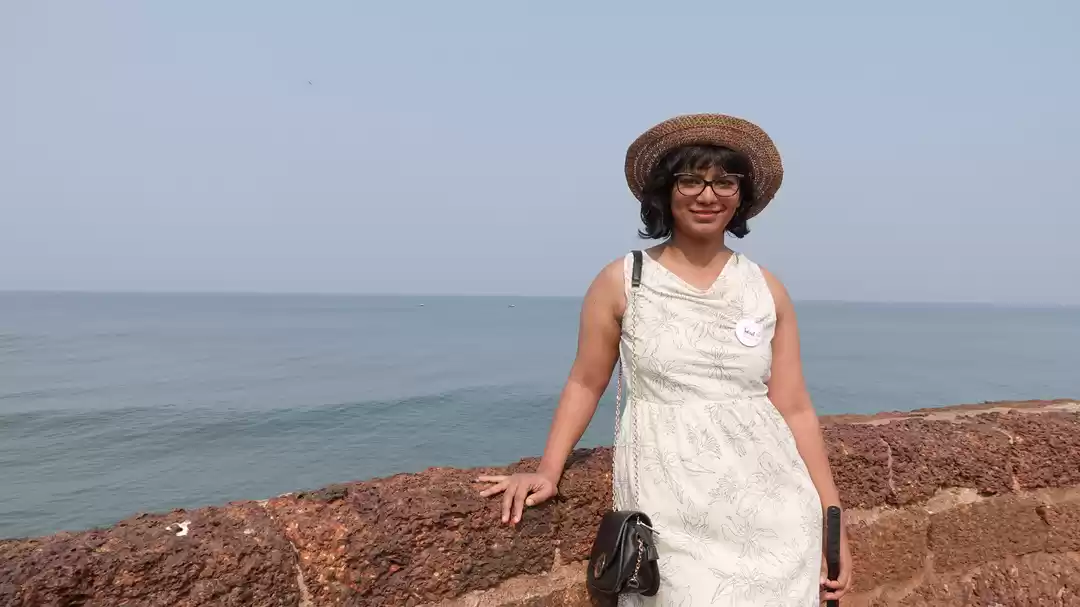Are you looking for a unique and unforgettable travel experience in India? Do you want to explore the ancient and majestic fort that has witnessed the rise and fall of many dynasties and invaders? Do you want to discover the secrets and stories behind the stunning monuments and sculptures that adorn the fort? If yes, then Kalinjar Fort is the perfect destination for you!
Kalinjar Fort is a historical and cultural treasure that lies in the Bundelkhand region of Uttar Pradesh, India. It is one of the oldest and most impressive forts in the country, dating back to the 10th century CE. It has been the battleground of many wars and the seat of many rulers, such as the Chandellas, the Pratiharas, the Mughals, and the British. It has also been the home of many legends and myths, such as the one of Lord Shiva drinking the poison at Neelkanth Temple.
In this article, we will guide you through the location, history, architecture, attractions, and tourism aspects of Kalinjar Fort. We will also provide you with tips and tricks to make your visit more enjoyable and memorable. By the end of this article, you will be ready to embark on a journey to the timeless fortress of Bundelkhand!

Where is Kalinjar Fort located and how to reach it?
Kalinjar Fort is located in the Banda district of Uttar Pradesh, about 230 km from Allahabad and 350 km from Lucknow. It is situated on an isolated hilltop, surrounded by the Vindhya mountains and the Ken river. The fort offers a panoramic view of the scenic landscape and the rural life of Bundelkhand.
The easiest way to reach Kalinjar Fort is by road, as there are no direct trains or flights to the nearest town of Banda. You can hire a taxi or a bus from Allahabad or Lucknow, or any other nearby city, and reach Banda in about 4 to 5 hours. From Banda, you can take another taxi or a bus to Kalinjar, which is about 55 km away. The road to Kalinjar is narrow and winding, but the scenery is worth the ride.
Alternatively, you can also reach Kalinjar Fort by train, if you don’t mind changing trains and travelling for a longer time. You can take a train to Khajuraho, which is about 130 km from Kalinjar, and then take another train to Atarra, which is about 25 km from Kalinjar. From Atarra, you can take a taxi or a bus to Kalinjar. The train journey will take about 8 to 10 hours, depending on the availability and timings of the trains.
What is the history and significance of Kalinjar Fort?
The name Kalinjar means “the destroyer of time”, and it reflects the ancient and enduring nature of the fort. According to legend, the fort was built by Lord Shiva himself, when he came to the hilltop to drink the poison that emerged from the churning of the ocean. The poison turned his throat blue, and hence he is also known as Neelkanth, or the blue-throated one. The Neelkanth Temple, dedicated to Lord Shiva, is one of the oldest and most sacred temples in the fort.
The history of Kalinjar Fort is as fascinating as its legend. The fort was first mentioned in the 5th century CE, when it was ruled by the Gupta dynasty. It then passed on to the Pratihara dynasty, who made it their capital in the 9th century CE. The fort reached its peak of glory under the Chandella dynasty, who ruled over Bundelkhand from the 10th to the 13th century CE. The Chandellas were known for their patronage of art, culture, and religion, and they built many temples, palaces, and sculptures in the fort.
The fort also witnessed many invasions and battles, as it was coveted by many rulers and conquerors. In the 12th century CE, the fort was attacked by Prithviraj Chauhan, the king of Delhi, who defeated the Chandellas and captured the fort. However, he soon lost it to Qutub-ud-din Aibak, the founder of the Delhi Sultanate, who also plundered and destroyed many temples and monuments in the fort. The fort then changed hands between various Muslim and Hindu rulers, such as the Khiljis, the Tughlaqs, the Lodis, the Gonds, and the Bundelas.
The most famous siege of Kalinjar Fort took place in the 16th century CE, when it was attacked by Sher Shah Suri, the Afghan ruler who challenged the Mughal empire. Sher Shah Suri laid a prolonged and fierce siege to the fort, and finally managed to breach its walls after a year. However, he was fatally wounded by a cannonball during the assault, and died soon after. His death marked the end of his reign, and the fort was recaptured by the Mughals. The Mughals, especially Akbar, renovated and fortified the fort, and used it as a military base and a prison.
The fort also played a role in the 18th and 19th century CE, when it was involved in the Maratha wars and the Indian rebellion of 1857. The fort was finally captured by the British in 1812, who dismantled its defenses and abandoned it. The fort then fell into decay and neglect, until it was declared a protected monument by the Archaeological Survey of India in 1955.
The fort is now a popular tourist attraction, and a testimony to the rich and diverse history of India. It is also a symbol of the resilience and courage of the people of Bundelkhand, who fought and defended their land and culture against many odds.
What are the architectural features and styles of Kalinjar Fort?
Kalinjar Fort is a marvel of engineering and architecture, that reflects the influences of various dynasties and cultures that ruled over it. The fort covers an area of about 8 km, and is surrounded by a 7 km long wall that has eight gates. The wall is made of sandstone and granite, and is reinforced with bastions, towers, and loopholes. The wall also has many sculptures and inscriptions, that depict the religious and secular themes of the fort.
The fort has many buildings and structures within its premises, that serve different purposes and functions. Some of the buildings are religious, such as temples, shrines, and mosques. Some of the buildings are secular, such as palaces, barracks, and granaries. Some of the buildings are functional, such as water tanks, wells, and drains. Some of the buildings are decorative, such as pavilions, gardens, and fountains.
The fort also exhibits various architectural styles and features, that reflect the tastes and preferences of different rulers and periods. Some of the styles and features are Hindu, such as the shikhara, the mandapa, and the garbhagriha. Some of the styles and features are Islamic, such as the dome, the arch, and the minaret. Some of the styles and features are British, such as the Gothic, the Victorian, and the Georgian.
The fort is a blend of harmony and contrast, of beauty and strength, of art and science. It is a masterpiece of human creativity and ingenuity, that has stood the test of time and nature.
What are the attractions and monuments within Kalinjar Fort?
Kalinjar Fort is a treasure trove of attractions and monuments, that showcase the cultural and artistic heritage of the fort. There are many temples, palaces, sculptures, and inscriptions within the fort, that are worth seeing and admiring. Here are some of the most prominent and popular attractions and monuments within the fort:
Neelkanth Temple: This is the oldest and most sacred temple in the fort, dedicated to Lord Shiva. It is located at the highest point of the fort, and is believed to be the spot where Lord Shiva drank the poison. The temple has a simple and elegant structure, with a shikhara, a mandapa, and a garbhagriha. The temple also has a lingam, which is the symbol of Lord Shiva, and a yoni, which is the symbol of his consort, Parvati. The temple is decorated with many sculptures and carvings, that depict the various forms and aspects of Lord Shiva, such as Nataraja, Ardhanarishvara, and Bhairava. The temple is also famous for its annual festival, called Shivaratri, which is celebrated in the month of February or March. The festival attracts thousands of devotees and pilgrims, who come to worship and offer prayers to Lord Shiva.
Sita Sej: This is a small and secluded chamber, located near the Neelkanth Temple. It is believed to be the place where Sita, the wife of Lord Rama, spent some time during her exile. The chamber has a stone bed, on which Sita is said to have rested. The chamber also has a small window, through which Sita is said to have gazed at the stars. The chamber is a symbol of the love and devotion of Sita, who followed her husband in his trials and tribulations.
Mrityunjaya Mahadev Temple: This is another temple dedicated to Lord Shiva, located near the Alamgir Gate. It is also known as the temple of the conqueror of death, as it is believed that Lord Shiva granted immortality to a devotee who worshipped him here. The temple has a shivalingam, which is said to have miraculous powers. The temple also has a water tank, which is said to have healing properties. The temple is a symbol of the power and grace of Lord Shiva, who bestows blessings and boons to his followers.
Buddha Mandir: This is a temple dedicated to Lord Buddha, located near the Panna Gate. It is one of the rare examples of Buddhist architecture in the fort, as most of the fort is dominated by Hindu and Islamic elements. The temple has a dome, a stupa, and a statue of Lord Buddha, sitting in a meditative pose. The temple also has a small museum, which displays some relics and artifacts related to Buddhism. The temple is a symbol of the peace and harmony of Buddhism, which spread across India and beyond.
Chauburji Mosque: This is a mosque built by the Mughals, located near the Budhi Gate. It is also known as the four-towered mosque, as it has four minarets at its corners. The mosque has a dome, an arch, and a prayer hall, which are typical of Islamic architecture. The mosque also has some inscriptions and paintings, which depict the verses and scenes from the Quran. The mosque is a symbol of the faith and devotion of Islam, which ruled over India for many centuries.
Bara Darwaza: This is the main gate of the fort, located on the western side. It is also known as the big gate, as it is the largest and most impressive gate of the fort. The gate has a massive arch, which is decorated with sculptures and carvings. The gate also has a famous inscription, which records the victory of Sher Shah Suri over the Mughals in 1545 CE. The gate is a symbol of the glory and pride of the fort, which resisted and defeated many enemies.
Pandu-Kund: This is a natural spring, located near the Neelkanth Temple. It is believed to be the place where the Pandavas, the heroes of the epic Mahabharata, bathed and rested during their exile. The spring has clear and cool water, which is said to have medicinal qualities. The spring also has a small shrine, which is dedicated to the Pandavas. The spring is a symbol of the courage and loyalty of the Pandavas, who faced many hardships and challenges in their life.
Bhairon Ki Jharia: This is a cave, located near the Mrityunjaya Mahadev Temple. It is believed to be the abode of Bhairava, a fierce form of Lord Shiva. The cave has a dark and narrow passage, which leads to a chamber, where a statue of Bhairava is installed. The cave also has some rock-cut sculptures and paintings, which depict the various aspects and manifestations of Bhairava. The cave is a symbol of the fear and awe of Bhairava, who is the protector and destroyer of the fort.
These are some of the main attractions and monuments within Kalinjar Fort, but there are many more to explore and admire. You can spend hours wandering and marveling at the fort, and still find something new and interesting to see and learn. The fort is a living museum, that showcases the history and culture of India in a captivating and captivating way.

When is the best time to visit Kalinjar Fort and what are the timings and fees?
Kalinjar Fort is open throughout the year, but the best time to visit it is between October and March, when the weather is pleasant and comfortable. The fort is closed during the monsoon season, from July to September, when the roads are slippery and the visibility is low. The fort is also crowded during the festival season, especially during Shivaratri, when thousands of devotees flock to the Neelkanth Temple.
The fort is open from 6 am to 6 pm, every day of the week. The entry fee is Rs. 25 for Indian nationals and Rs. 300 for foreign nationals. The camera fee is Rs. 50 for still cameras and Rs. 100 for video cameras. The guide fee is Rs. 200 for a group of up to 10 people. The guides are well-versed in the history and culture of the fort, and can enhance your experience and knowledge.
What are the tips and things to remember while visiting Kalinjar Fort?
Kalinjar Fort is a magnificent and majestic place, but it also requires some preparation and caution while visiting it. Here are some tips and things to remember while visiting the fort:
- Wear comfortable and sturdy shoes, as the fort is spread over a large area and has many steps and slopes. Avoid wearing sandals or flip-flops, as they can cause injuries or accidents.
- Carry enough water and snacks, as the fort does not have any shops or restaurants within its premises. You can find some eateries and stalls outside the fort, but they may not be hygienic or reliable.
- Carry a hat, sunglasses, and sunscreen, as the fort can get very hot and sunny during the day. Avoid visiting the fort during the peak hours of noon, as the heat can be unbearable and harmful.
- Respect the sanctity and cleanliness of the fort, and do not litter or vandalize the monuments and sculptures. Do not touch or climb on the structures, as they are fragile and precious. Do not scribble or carve your names or messages on the walls, as they are historical and cultural records.
- Follow the rules and regulations of the fort, and do not enter the restricted or prohibited areas. Do not take pictures or videos of the places where photography is not allowed, such as the Neelkanth Temple. Do not make loud noises or disturb the peace and tranquility of the fort.
- Enjoy the beauty and charm of the fort, and appreciate the heritage and legacy of the fort. Learn about the history and culture of the fort, and marvel at the architecture and art of the fort. Take back some memories and souvenirs of the fort, and share them with your friends and family.
What are the other attractions and activities near Kalinjar Fort?
Kalinjar Fort is not the only attraction in the Bundelkhand region, as there are many other places and things to see and do near the fort. Here are some of the other attractions and activities near the fort:
Khajuraho Temples: These are a group of Hindu and Jain temples, located about 130 km from Kalinjar Fort. They are famous for their erotic and exquisite sculptures, that depict the various aspects of human life and love. They are also a UNESCO World Heritage Site, and a marvel of Indian art and architecture.
Panna National Park: This is a wildlife sanctuary, located about 150 km from Kalinjar Fort. It is home to many animals and birds, such as tigers, leopards, deer, monkeys, peacocks, and vultures. It also has a beautiful waterfall, called the Raneh Falls, which is a sight to behold.
Ajaygarh Fort: This is another fort, located about 80 km from Kalinjar Fort. It was built by the Chandellas, and was a sister fort of Kalinjar Fort. It has many temples and palaces, that are similar to Kalinjar Fort. It also has a stunning view of the Ken river and the valley.
Ajaigarh Wildlife Sanctuary: This is another wildlife sanctuary, located about 85 km from Kalinjar Fort. It is a habitat for many animals and birds, such as sloth bears, jackals, hyenas, partridges, and quails. It also has a rich flora and fauna, that add to its beauty and diversity.
These are some of the other attractions and activities near Kalinjar Fort, but there are many more to explore and enjoy. You can plan a trip to the Bundelkhand region, and experience the history, culture, nature, and adventure of the region.
Conclusion
Kalinjar Fort is a must-visit destination for anyone who loves history, culture, art, and architecture. It is a place where you can witness the glory and grandeur of the past, and feel the spirit and soul of the present. It is a place where you can learn and appreciate the heritage and legacy of India, and be inspired and amazed by the creativity and ingenuity of humans.
We hope you enjoyed this article, and found it informative and helpful. If you have any questions or comments, please feel free to share them with us. If you have visited or plan to visit Kalinjar Fort, please let us know your experience and feedback.

